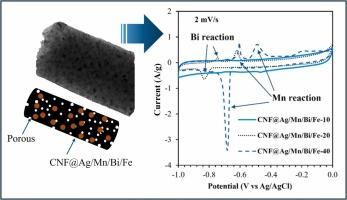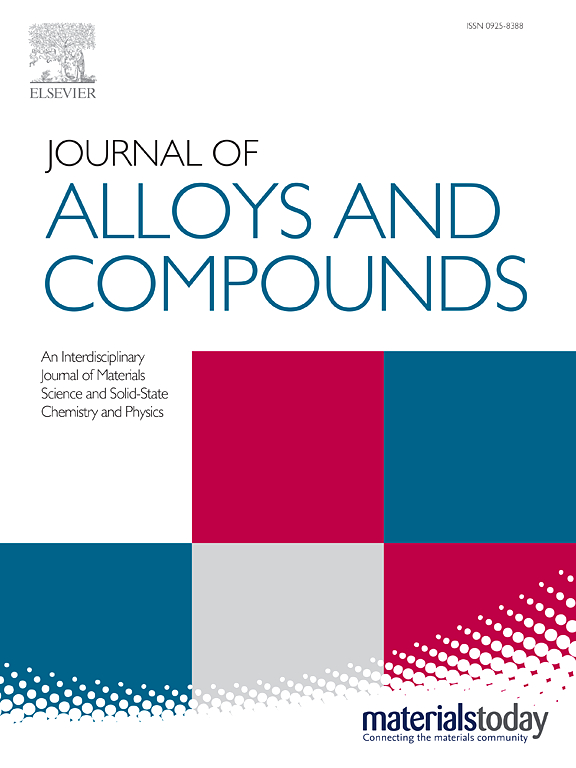Multi-phase Structure Electrospun CNF@Ag/Mn/Bi/Fe Composite Nanofiber Enhanced Supercapacitor Behavior
IF 5.8
2区 材料科学
Q2 CHEMISTRY, PHYSICAL
引用次数: 0
Abstract
This study presents the development of carbon-based multiphase metal oxide nanocomposites (CNF@MOx; M = Ag, Mn, Bi, and Fe) incorporating silver, manganese, bismuth, and iron nanoparticles within polyacrylonitrile (PAN)-derived carbon nanofibers. These nanocomposites were fabricated via the electrospinning technique with metal oxide concentrations of 10, 20, and 40%w. This was followed by annealing in an argon atmosphere. The resulting nanofibers exhibited diameters ranging from 559 to 830 nm, with embedded nanoparticles measuring from 9 to 21 nm. Comprehensive characterization revealed that the nanofibers possessed uniform morphology, high porosity, and robust thermal stability. X-ray photoelectron spectroscopy (XPS) and X-ray absorption spectroscopy (XAS) confirmed the valence states of the metal oxides (Ag⁰, Bi³⁺, Mn²⁺, Mn³⁺, Fe²⁺, and Fe³⁺), which are integral to redox reactions and charge storage mechanisms. Among the fabricated composites, CNF@Ag/Mn/Bi/Fe-20 demonstrated the best electrochemical performance, achieving a specific capacitance of 156 F·g-1 at a scan rate of 2 mV·s-1 and outstanding cycling stability with a capacity retention of over 96% after 1400 charge-discharge cycles. The synergistic combination of double-layer capacitance and pseudocapacitance mechanisms in these nanofibers represents a significant improvement over conventional electrode material. This study highlights CNF@Ag/Mn/Bi/Fe nanocomposites as highly promising candidates for advanced energy storage applications, particularly in supercapacitor technologies.

求助全文
约1分钟内获得全文
求助全文
来源期刊

Journal of Alloys and Compounds
工程技术-材料科学:综合
CiteScore
11.10
自引率
14.50%
发文量
5146
审稿时长
67 days
期刊介绍:
The Journal of Alloys and Compounds is intended to serve as an international medium for the publication of work on solid materials comprising compounds as well as alloys. Its great strength lies in the diversity of discipline which it encompasses, drawing together results from materials science, solid-state chemistry and physics.
 求助内容:
求助内容: 应助结果提醒方式:
应助结果提醒方式:


